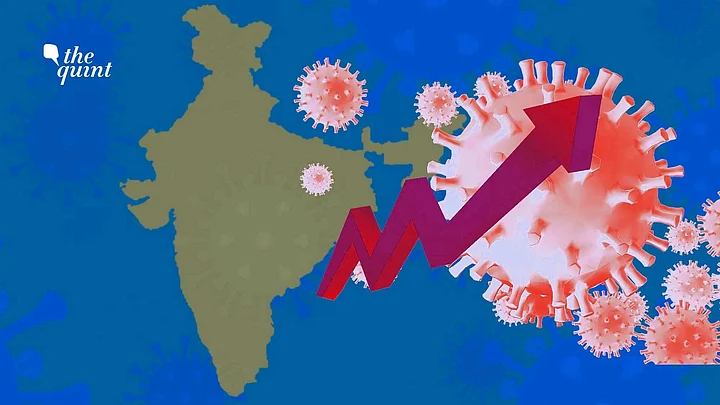Amid a surge of COVID-19 cases in the country, the Ministry of Health and Family Welfare released new guidelines for the isolation of mild and asymptomatic coronavirus cases.
What are the new rules? When can a person end isolation? Here's all you need to know.
I have tested COVID positive. When can I end isolation?
As per the government's advisory, patients who are asymptomatic or have mild disease will remain under home isolation for at least seven days after testing positive and no fever for 3 successive days.
This rule applies to those with mild and asymptomatic symptoms.
They should, however, continue wearing masks.
Should I get tested after home isolation is over?
There is no need for retesting after the home isolation period is over.
Who is considered asymptomatic?
A person who has tested positive but are not experiencing any symptoms and have oxygen saturation at room air of more than 93 percent.
What are mild cases?
Clinically-assigned mild cases are patients with upper respiratory tract symptoms with or without fever, without shortness of breath and having oxygen saturation at room air of more than percent.
Who is allowed to quarantine at home?
Such patients should have the requisite facility at their residence for self-isolation and for ‘quarantining' the family contacts.
A caregiver (ideally someone who has completed his COVID-19 vaccination schedule) should be available to provide care on 24x7 basis.
A communication link between the caregiver and a Medical Officer is a prerequisite for the entire duration of home isolation.
Who is advised against quarantining at home?
Home isolation is not recommended for patients who are over 60 years of age, those with comorbidities, and those who are immunocompromised. It may be permitted only after evaluation by the treating medical officer, as per the new rules.
When should a COVID patient seek medical help?
Seek immediate medical attention in the following cases:
Unresolved High-grade fever (more than 100° F for more than 3 days)
Difficulty in breathing
Dip in oxygen saturation (Sp02 < 93% on room air at least 3 readings within 1 hour) or respiratory rate >24/ min
Persistent pain/pressure in the chest
Mental confusion
Severe fatigue and myalgia
(At The Quint, we question everything. Play an active role in shaping our journalism by becoming a member today.)
